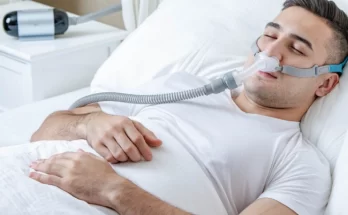
As summer temperatures rise, so does the risk of heat-related illnesses. Among these, heatstroke is one of the most severe and potentially life-threatening conditions. Understanding how to prevent heatstroke is crucial for staying safe and healthy during hot weather. Here we talk about heatstroke and top prevention tips to help you enjoy the summer safely.
What is Heatstroke?
Heatstroke occurs when the body’s temperature regulation system is overwhelmed by excessive heat. It is characterized by a core body temperature of 104°F (40°C) or higher. Unlike heat exhaustion, which is a milder form of heat-related illness, heatstroke requires immediate medical attention as it can lead to serious complications or even death if untreated.
Symptoms of Heatstroke
Recognizing the symptoms of heatstroke is vital for prompt treatment. Key symptoms include:
- High body temperature (104°F or higher)
- Hot, red, dry, or damp skin
- Rapid, strong pulse
- Headache
- Dizziness
- Nausea
- Confusion
- Loss of consciousness
How to Prevent Heatstroke
Preventing heatstroke involves several proactive measures to avoid excessive heat exposure and maintain proper hydration. Here are some top prevention tips:
1. Stay Hydrated
One of the most effective ways to prevent heatstroke is to stay well-hydrated. Drink plenty of water throughout the day, even if you don’t feel thirsty. During hot weather or when exercising, increase your fluid intake to compensate for the additional sweat loss. Avoid alcohol and caffeine as they can dehydrate your body.
2. Dress Appropriately
Wearing the right clothing can help keep your body cool. Opt for lightweight, loose-fitting, and light-colored clothes. These materials reflect heat and allow your body to cool naturally. Don’t forget to wear a wide-brimmed hat and sunglasses to protect your face and eyes from the sun.
3. Limit Sun Exposure
Avoid being outdoors during the hottest part of the day, typically between 10 a.m. and 4 p.m. If you must be outside, try to stay in the shade as much as possible. Plan outdoor activities for the early morning or late evening when temperatures are cooler.
4. Use Sunscreen
Applying sunscreen can prevent sunburn, which can impair your body’s ability to cool itself and increase the risk of heat-related illnesses. Use a broad-spectrum sunscreen with an SPF of at least 30, and reapply it every two hours, or more often if you’re swimming or sweating.
5. Take Cool Showers or Baths
Taking a cool shower or bath can help lower your body temperature. If you feel overheated, a quick cool-down can prevent your body from reaching dangerous temperature levels. Even splashing cool water on your face or immersing your feet in cool water can provide relief.
6. Use Fans and Air Conditioning
Staying in air-conditioned spaces is one of the best ways to protect against heatstroke. If you don’t have air conditioning at home, spend time in public places that do, such as shopping malls, libraries, or community centers. Fans can also help, but they may not be sufficient when temperatures are very high.
7. Take Breaks During Physical Activity
If you’re engaging in physical activity or exercise, take frequent breaks to cool down and drink water. Avoid strenuous activity during peak heat hours. Listen to your body and stop if you feel dizzy, weak, or overheated.
8. Monitor Your Health
Certain health conditions and medications can increase the risk of heatstroke. People with heart disease, high blood pressure, diabetes, or who are taking diuretics or other medications should take extra precautions. Consult your doctor about your risk and any special measures you should take.
9. Acclimatize to the Heat
If you’re not used to hot weather, give your body time to adjust. Gradually increase your exposure to heat over several days. This allows your body to adapt and improves its ability to handle higher temperatures.
10. Educate Others
Ensure that friends, family members, and co-workers are aware of the dangers of heatstroke and how to prevent it. Knowledge sharing can help everyone stay safe. Make sure children and the elderly, who are more vulnerable to heat-related illnesses, are especially informed and protected.
What to Do If You Suspect Heatstroke
If you or someone else shows signs of heat stroke, it is important to act quickly:
Call Emergency Services: Heatstroke is a medical emergency. Dial 911 or your local emergency number immediately.
Move to a Cooler Place: Get out of the sun and move to a shaded or air-conditioned area.
Cool the Body: Use any available means to lower the body temperature. This can include immersing in cool water, applying ice packs to the neck, armpits, and groin, or fanning while spraying with cool water.
Hydrate: If the person is conscious and able to drink, provide cool water or an electrolyte beverage. Avoid caffeine and alcohol.
Heatstroke is a serious and potentially deadly condition, but it is preventable with the right precautions. By staying hydrated, dressing appropriately, limiting sun exposure, using sunscreen, taking cool showers, utilizing fans and air conditioning, taking breaks during physical activities, monitoring your health, acclimatizing to the heat, and educating others, you can significantly reduce your risk. Always be aware of the symptoms of heatstroke and take immediate action if they occur. Enjoy the summer safely by prioritizing your health and well-being.
By following these tips and staying vigilant, you can protect yourself and others from the dangers of heatstroke and make the most of the sunny days ahead.






